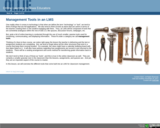
Management Tools for Online Learning
- Subject:
- Education
- Material Type:
- Activity/Lab
- Reading
- Provider:
- AEA Learning Online
- Provider Set:
- OLLIE
- Author:
- Evan Abbey
- Date Added:
- 01/13/2021

Management Tools for Online Learning
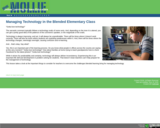
Managing Technology in the Blended Elementary Class

Managing Your Time as a Virtual Instructor
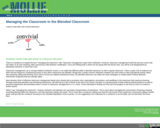
Managing the Classroom in the Blended Elementary Class
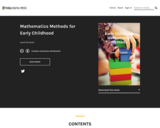
This textbook is an introduction to mathematics methods for early childhood.
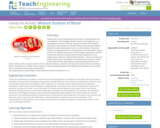
Students learn about the separation techniques of sedimentation and centrifugation and investigate whether blood is a homogeneous or a heterogeneous mixture. Working in groups as if they are biomedical researchers, they employ the scientific method and make observations about the known characteristics of urine, milk and blood. They probe further by analyzing research on the properties and fractionation modes of blood. As students learn about certain strange characteristics with the fractionation behavior of blood, they formulate hypotheses on the unique nature of blood. Using provided materials âolive oil, tomato juice and petroleum jellyâthey design an experiment and construct a blood model. They test their hypotheses by conducting experiments on the blood model, and then propose theories for the nature of blood as a mixtureâarriving at the theory of mixture dualism in bloodâthat blood is a complex mixture system. An activity-guiding handout and PowerPoint® presentation are provided for this student-directed, project-based activity.

Modeling
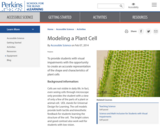
This activity was designed for blind learners, but all types of learners can use it to understand the structure of a plant cell. The purpose of this activity is to create an accurate representation of the shape and characteristics of plant cells. The cell models provide both tactile and kinesthetic feedback for students learning the structure of the cell. The bright colors and good contract also work well for students with low vision.
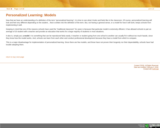
Models of Personalized Learning
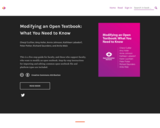
This is a five-step guide for faculty, and those who support faculty, who want to modify an open textbook. Step-by-step instructions for importing and editing common open textbook file and platform types are included.

We will start the lesson discussing what open educational resources are. Please watch the video first and read through the content. It is important to understand the concept of open educational resources as it will be the base for the rest of the modules.

Why do open educational resources matter? What is the point of using OER? Below are some of the benefits of using open educational resources that I have seen while working with OER over the past several years.

This activity was designed for blind learners, but all types of learners can use it to explore the law of conservation of momentum.
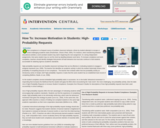
High-probability requests are one feasible classroom technique that can be effective in motivating students to engage in assigned classwork (Lee, 2006). The teacher first identifies an academic activity in which the student historically shows a low probability of completing because of non-compliance. The teacher then embeds within that low-probability activity an introductory series of simple, brief 'high-probability' requests or tasks that this same student has an established track record of completing (Belfiore, Basile, & Lee, 2008).

Profile of a Student with This Motivation Problem: The student lacks essential skills required to do the task. Areas of deficit might include basic academic skills, cognitive strategies, and academic-enabler skills. Here are teacher behaviors to help fix this motivation problem.
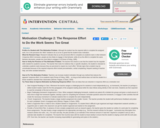
Although the student has the required skills to complete the assigned work, he or she perceives the ‘effort’ needed to do so to be so great that the student loses motivation. Learn teacher behaviors to fix this motivation problem.

The student is distracted or off-task because classroom instruction and learning activities are not sufficiently reinforcing to hold his or her attention. Learn teacher behaviors to help fix this motivation problem.

The student requires praise, access to rewards, or other reinforcers in the short term as a temporary ‘pay-off’ to encourage her or him to apply greater effort. Learn teacher behaviors to help fix this student motivation problem.
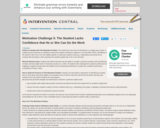
The student has a low sense of self-efficacy in a subject area, activity, or academic task and that lack of confidence reduces the student’s motivation to apply his or her best effort. NOTE: Self-efficacy is the student’s view of his or her own abilities specific to a particular academic area (e.g., mathematics) and should not be confused with self-esteem, which represents the student’s global view of his or her self-worth. Learn teacher behavior to help fix this student motivation problem.
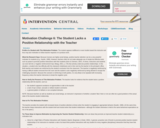
The student appears indifferent or even hostile toward the instructor and thus may lack motivation to follow teacher requests or to produce work. Learn teacher behaviors to help with this student motivation problem.